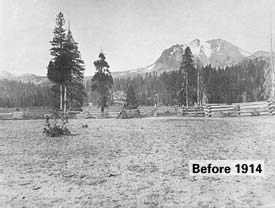and this one might be a condor:
The Red Spirit site seems to me to be very similar to other sites mentioned in my recent post
that linked to this post
that featured a Condor Sculpture shown here:
(Carl Bjork photo)
An exerpt from
Wings of the Spirit: The Place of the California Condor Among Native Peoples of the Californias
by John W. Foster, Senior State Archaeologist
"Ceremonial Importance: There is scattered evidence of the ritual use of California condors through much of the Californias. The sacrifice of these birds seems to have been widespread. In general, this served to transfer the power of the bird sacrificed to those engaged in its ritual killing. Possibly the condor's association with the dead (being a carrion eater), led to its incorporation into
mourning activities and renewal ceremonies... Perhaps the most detailed description of condor ceremony in southern California comes from the Panes (or bird) festival of the Luiseño. It was described by Friar Boscana of Mission San Juan Capistrano and by Friar Peyri of Mission San Luis Rey in the early 19th century. Similar ceremonies were held by the Gabrilieño, Cahuilla, Kumeyaay and Cupeño (Kroeber 1907; 2002).
The Panes (clearly a California condor from its description) is brought to the festival and placed upon an altar constructed for the purpose. The bird had been captured as a nestling, with condor nest sites being owned by the village. It was raised with great care until fully grown and selected for the sacrifice. Slowly, along with much crying and grimaces, the captive birds are killed by strangulation or pressing the heart. The bird's skin was removed in one piece and the flesh thrown on a fire. Skins and feathers were used to decorate venerated objects for the annual mourning ceremony. California condor skins were also used to make skirts that were retained as important ritual objects by their native owners (Bates et.al. 1993:41; Bates 1982). It should be noted that eagles were also sacrificed and some have argued (Geiger and Meighan 1976) that it was the Golden Eagle that was most powerful. Most experts have concluded that California condors held a unique place in the ceremonial life of California natives, and that eagles were used more commonly during the historic period as condor populations declined (Simons 1983, Bates et.al. 1993).
California condors could infuse humans with special powers. Vultures and condors, with their keen eyesight, were considered expert at finding lost objects. Among the Western Mono and Yokuts tribes, "money finders" wore full-length cloaks of condor feathers that reputedly enabled them to find lost valuables (Snyder and Snyder 2000:38). This power was extended to finding missing persons among condor shamen of the Chumash.
California condors also played a part in cosmic events. Among the Chumash, condors or eagles were sacrificed based on which celestial body was prominently visible at the time of the ceremony. Eagles were selected for rituals concerned with the Evening Star (Venus), while condors were chosen for rituals associated with the planet Mars (Hudson and Underhay 1978:88; Simons 1983)."
Alyssa's photo of the view from Red Spirit:
























